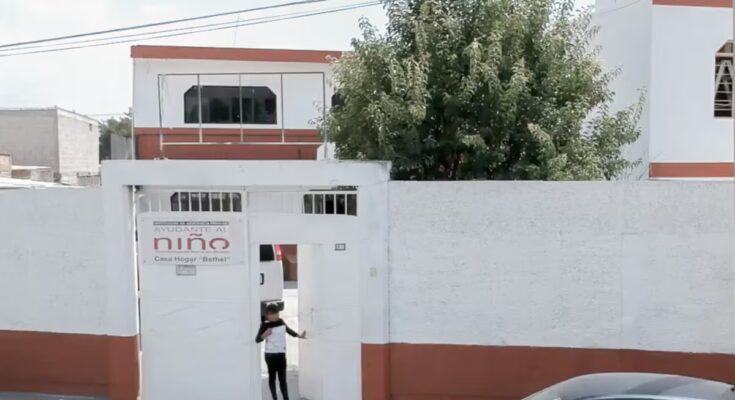Merlyn and Wanda Beeman arrived in Mexico in 1966. The purpose of their trip was to “evaluate how best to meet the needs and evangelize the people.” Thus, in 1967, the Sons of Mexico program was born. The Beemans began welcoming orphans into their home in Mexico City, where they took care of their basic needs, from food, clothing and a roof over their heads, to providing them with religious education and spiritual guidance. For more than 50 years, the couple’s initiative, funded through contributions from churches and religious groups across the United States, has expanded into a charity of up to eight foster families between the state of Mexico and Puebla. However, the façade fell on November 12, when an investigation, conducted by the organization Godly Response to Abuse in the Christian Environment (GRACE), found evidence of decades of sexual abuse, physical and psychological violence against children and adolescents in these shelters.
The 256-page GRACE report details how Children of Mexico, this non-profit organization founded in Missouri, United States, had for decades accumulated complaints from victims, witnesses and collaborators against at least 20 former employees who had committed sexual violence against minors in their care. Likewise, the investigation highlights an alleged cover-up by its leaders and impunity against attackers. Following the publication of the GRACE survey, the organization announced on the same day that it was ending its work in Mexico “effective immediately.” The Children of Mexico has operated for 58 years and, according to the board’s statement, which makes no mention of the report’s findings, “countless lives have benefited from this organization.”
“Disturbing events” in homes
The abuse, according to the investigation, began in 1968 when the Beeman couple obtained a center in the municipality of San Vicente Chicoloapan, in the State of Mexico, where they hosted 25 minors entrusted to their care. They lived in community, sharing meals, attending school together and attending religious services. At the same time, the couple worked to raise funds with donations that arrived from the United States.
One of the witnesses claims to have witnessed “disturbing events” involving teenagers aged around 17. He himself says the children spoke openly about the Beemans’ sexual abuse. The spousal assault scheme focused primarily on youth between the ages of 14 and 17. Those who tolerated the abuse were part of a system of privileges, which consisted of better clothes and private rooms. On the other hand, overcrowding in homes has forced up to three children to share the same bed.
Another survivor said he used religion as a tool to control and manipulate children, acting in ways that undermined their beliefs. Operation Niño de México expanded to homes located in Huexotla and Texcoco, in the State of Mexico, where they were separated by sex on adjacent properties; as well as in Cholula, in Puebla.
After a series of complaints, in 1978, the couple, together with 12 or 13 children, unexpectedly left Mexico under pressure from the authorities and also from members of the churches that supported the mission. “The Beemans’ decision to take these children suggests a possible attempt to maintain control or hide information about the situation in Mexico,” the report states. In their replacement, Donald and Viola Bader took over as executive directors of Children of Mexico. These provided a response to the accusations against their predecessors. According to a witness, they accused the minors of having had sexual relations with the Beemans and called them “perverts of the world”. Wanda Beeman is dead, while her husband, Merlyn, has denied the allegations and declined an invitation to testify in the GRACE investigation.
During the 1980s, sexual abuse and physical and psychological violence became common behaviors in the rest of the homes that were part of Children of Mexico. During the 1980s and early 2000s, Fidel Núñez, Fernando Soriano and his wife Martha, Jesús Ríos, and Salvador Carrizosa took on tutoring roles, and during this time they amassed a number of reports of sexual abuse against girls and adolescents within the program. The investigation indicates that these attacks and complaints were committed under the direction of Terry Stine, the institution’s executive director, who held the position from 1987 to 2007. “There were cases where children manipulated situations to get other people into trouble and these cases were investigated by the psychologist, with no results,” Stine said in an interview for the GRACE investigation.
Other alleged attackers such as Israel Ávalos or Noé Flores Floriano are added to the list of names in the early 2000s in Sons of Mexico. Ávalos was reported for severely beating the children in his room. While Flores Soriano, one of the first newborns to participate in the Sons of Mexico program in the 1960s, joined the institution in 2000 as a doctor responsible for the health of minors. Several complaints accuse him of having carried out diagnoses on the children of the center without the presence of a responsible adult and of having committed “irregular acts” during these checks. According to the complaint, he began “licking and sucking” the children’s faces. Afterwards, he sent pictures of his member to the young women, until he began abusing it during consultations. Before being dismissed for his conduct, Flores Soriano remained in the institute until 2016.
A stick with a Bible verse
Among the punishments described against the children in the report, they highlight that they were forced to stand for long periods in the sun while carrying heavy concrete blocks; to being confined for hours in a dark warehouse without food and forced to stand with their noses against the wall. Another name in particular is that of Luis Escutia, who as a child was also part of the Sons of Mexico. “One particularly harrowing form of punishment involved the use of a stick or wooden rod engraved with a Bible verse, which housekeepers used to hit children on the buttocks or hands,” one victim recalled in the report. The investigation specifies that these punishments by several leaders of the institute, including Luis Escutia and others, seemed to perpetuate the disciplinary methods that they themselves had experienced within the institute.

An investigation by Mexican authorities implicated a total of seven alleged abusers. Among the accused, only five investigative files were opened, which only led to the arrest of Javier Colocia, formally accused of sexual crimes against minors in Mexico in 2022.
In the same year, a former American intern working at Children of Mexico filed a formal complaint with the organization’s board of directors, chaired since 2012 by Steve Ross, who for decades also omitted accusations against his collaborators in the reception centers. The response this citizen received from the council regarding the atrocities he saw inside the shelters was as follows: “The council and staff will review each of the archived cases to ensure that actions taken in the past have been effective and will evaluate what further actions may be necessary. If necessary, outside counsel will be consulted. The council, as a starting point, will raise a prayer for guidance in this situation.”
Last July, Mexican state government officials raided Children of Mexico facilities, confiscated documents and removed 37 minors from their orphanages. According to the Mexican Prosecutor’s Office, possible vulnerabilities in the rights of children and adolescents were detected during the procedures. As a result, the authorities immediately secured the houses known as Jireh, Bethel, Génesis, Esperanza and Agape.
The minors were placed under the custody and protection of the System for the Integral Development of the Family of the State of Mexico. The Mexican office of the Human Rights Commission was also present during the operation to guarantee the rights of all those involved.



